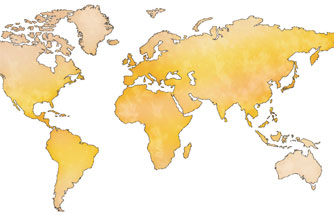
Four Trends in Global Leadership Development
High-performance organizations are tackling the challenges of global leadership development through a combination of broader thinking, deeper analysis, and higher expectations. Results from the fourth annual i4cp/AMA/Training magazine study of challenges and opportunities in global leadership development highlight four next practices among its key findings.
These four trends are an indication of the direction in which high-performance organizations (HPOs) are leading state-of-the-art global leadership development and each answers a fundamental question that leadership development professionals must address. The four next practices and the key questions they answer:
-
There is a shift to defining leaders by influence, not role.
Who should be considered global leaders? More than half of study participants from HPOs define leaders not by their position on the organization chart but by their degree of influence and performance. With flatter, more matrixed organizations, employees are discovering they need leadership skills to collaborate with colleagues in another business unit, share expertise with peers in a different geographic location or work on ad-hoc projects. The use of this broader definition correlates to higher market performance. -
High-performance organizations (HPOs) are allowing managers to self-select involvement in global leadership development programs.
How should global leaders be selected? While C-suite executives and high-potential employees are still prime targets for global leadership development, making the process available to any manager who expresses interest in it sets HPOs apart from low-performing organizations (LPOs). Further, it is a practice that correlates to global leadership development effectiveness, one of the dependent variables analyzed in the study. -
Strategic workforce planning (SWP) is playing a pivotal role in driving the content of global leadership development processes.
What skills should be developed in global leaders? Long-term strategies and values continue to influence global leadership development, but the study finds increased emphasis on using SWP to identify competency gaps and drive the content of global leadership development. Nearly twice as many HPOs as LPOs use strategic workforce planning in this manner, and it's a practice that significantly correlates to global leadership development effectiveness. -
Business performance is gaining prominence as a measure of global leadership development effectiveness.
How should the effectiveness of global leadership development initiatives be measured? Although emphasis on standard measures such as participant satisfaction and behavioral changes continues, the study finds a rise in the use of measures such as sales and productivity compared with previous iterations. Engagement scores of the leaders' direct reports have also seen an uptick as a measure, and this is correlated to global leadership development effectiveness.
These next practices create a blueprint for companies that want to elevate their global leadership development practices to emulate those of high-performance organizations. Two firms are highlighted in the study for their global leadership development excellence:
-
Molson Coors: This Denver-based firm may be best known in the U.S. for its images of Rocky Mountain cold beer, but Molson Coors also has breweries and brands in China, India, Ukraine, Czech Republic, Romania and other countries, complementing its markets in the U.S., Canada and the UK.
Molson Coors' typical global leadership development program brings together approximately 20 participants in four one-week sessions over the course of a year. In 2013, the program included a kick-off week in Denver, a second week in Canada, a third week in an international market, and a fourth week in Central Europe. Each week includes a market tour, providing participants a first-hand look at distributors, breweries, grocery stores and restaurants to see how their products are sold globally.
-
FedEx Express: FedEx Express has been in business for 40 years and employs more than 160,000 team members servicing customers worldwide, yet the company doesn't lose sight of one significant key to its success: the vast majority of its frontline managers are promoted from within.
To be successful, FedEx had to develop a robust leadership development process capable of preparing its workforce for the challenges of global frontline management. The organization services customers in 220 countries/territories, and a whopping 82% of FedEx frontline managers come from the ranks.
The four trends highlighted in the report carry important implications for organizations:
- Defining leaders by influence rather than organizational charts means that companies need to redesign their processes for identifying leaders for developmental purposes as well as readdress the scope and content of training programs.
- Opening global leadership development to self-selection can help organizations uncover hidden gems: high-potential managers with penchants for broadening their knowledge and sharpening their global leadership skills.
- Using strategic workforce planning to help drive the content of global leadership development allows organizations to determine both key competencies that will continue to need to be developed in leaders as well as competencies that have growing importance but may not be adequately addressed by current global leadership development programs.
- Incorporating business performance and employee engagement measures to determine global leadership development effectiveness can help executives respond to increasing pressure from boards of directors and shareholders to provide quantifiable results from investments.
Today's organizations recruit from worldwide talent pools, buy from worldwide vendors, sell to worldwide customers and distribute through worldwide channels. Global-mindedness is no longer an option; it is a given for high-performance organizations.